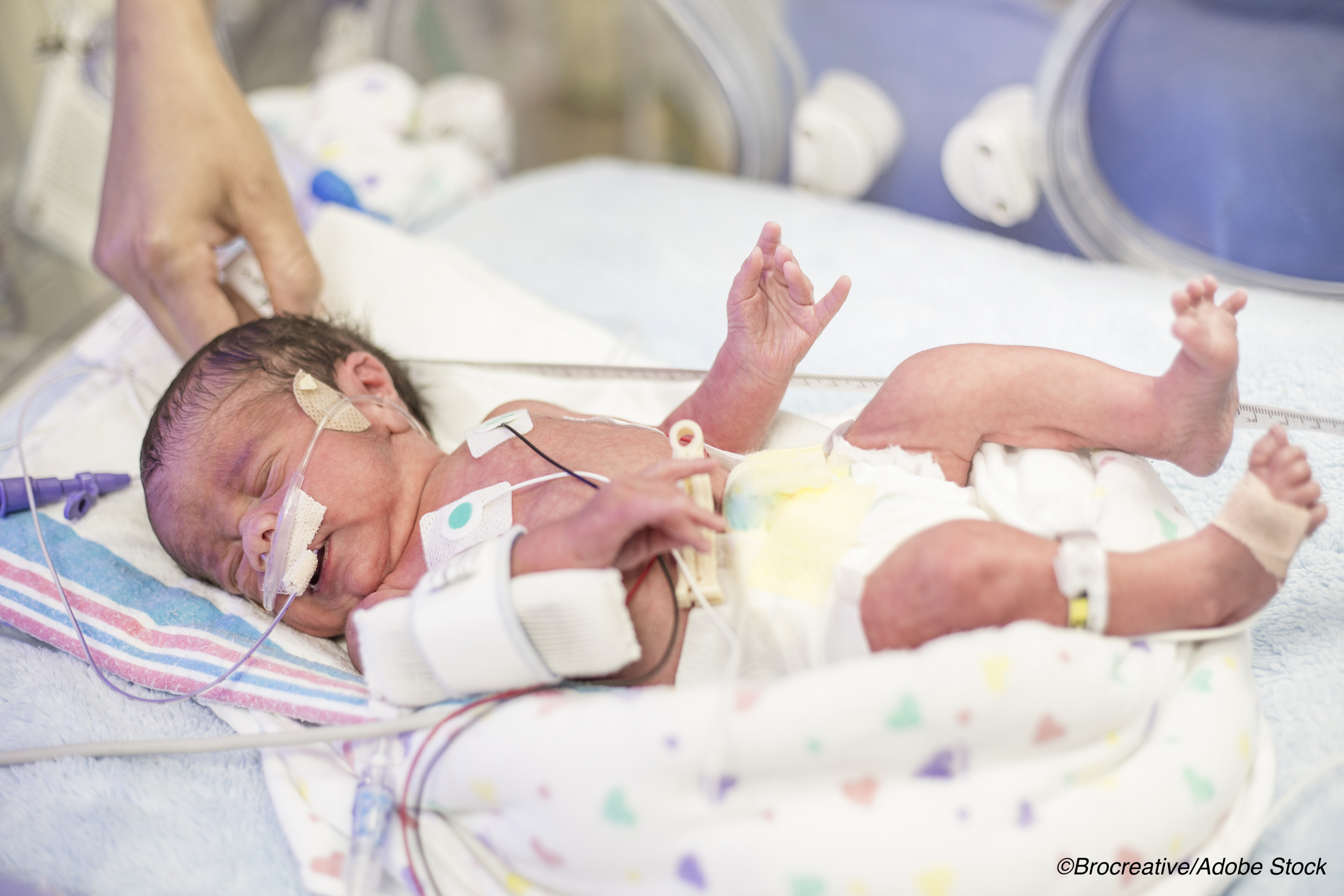
Premature infant median adjusted NICU stays increased by more than a week between 2005 and 2018 while morbidity associated with premature birth declined, according to a study involving more than 800 hospital neonatal ICUs in the United States.
Gestational age and weight at discharge increased steadily during the 14-year period among premature infants, while adjusted postmenstrual discharge age increased by 8 days and adjusted discharge weight increased by 316 grams.
Adjusted median z score for weight at discharge increased by 0.19 standard units (95% CI, 0.18-0.20) across all gestational ages and NICU types, wrote researcher Erika Edwards, PhD, and colleagues, from the nonprofit, worldwide neonatal health collaborative Vermont Oxford Network (VON).
The researchers estimated the per infant increase in economic costs associated with the longer NICU stays to be $28,577, assuming that costs on each of the additional 8 NICU data were similar.
Writing in Pediatrics, Edwards and colleagues noted that the “benefits, costs and harms of increased age and weight at discharge are undetermined.” Their study was published online Jan. 28.
“Nonetheless, families and infants are separated for more than a week longer today than they were 14 years ago. The effects of prolonged separation cannot be underestimated,” they wrote.
They noted that, historically, discharge has occurred when infants achieved a specific, predefined weight. But key randomized trials, published from the late 1970s through the early 2000s, showed no adverse consequences for early discharge based on physiological readiness or physician discretion.
“The savings associated with earlier discharge were substantial, from $18,560 per infant in 1986, or $43,686 in 2020 dollars, to $5,016 per infant in 2002 or $7,307 in 2020 dollars, and the effect of prolonged hospital stays on families is equally as important as financial interests,” Edwards and colleagues wrote. “However, these trials were conducted in an earlier era of neonatal intensive care, when treatment practices and survival rates for extremely preterm infants were much different from how they are today.”
Their analysis included data on 314,811 infants born at weeks 24 to 29 weeks’ gestation at 824 U.S. VON-member hospitals between 2005 and 2018 without major congenital abnormalities.
Using quantile regression analysis, adjusting for infant characteristics and complexity of hospital course, the researchers estimated differences in median age, weight, and discharge weight z score at discharge stratified by gestational age at birth and by NICU type.
From 2005 to 2018, postmenstrual age at discharge increased an estimated 8 days (95% CI, 8-9 days) for all infants. Discharge weight increased an estimated 316 (95% CI, 308- 324) grams, and median discharge weight z score increased an estimated 0.19 (95% CI, 0.18-0.20) standard units.
Increases occurred within all birth gestational ages and across all NICU types, the proportion of infants discharged home from the hospital on human milk increased, and the proportions of infants discharged home from the hospital on oxygen or a cardiorespiratory monitor decreased.
“Nutritional management quality improvement efforts and the Baby-Friendly Hospital Initiative may have contributed to the increased discharge weight and decreased growth failure, although we do not know whether similar improvements in nutrition and human milk could be achieved in shorter stays or whether the improvements were the result of longer stays,” the researcher wrote.
A key study limitation was lack of information on discharge policies at the individual NICU level, which the researchers noted “would give us additional insights into why we observed these increases.”
“Infants may be staying longer because of misaligned financial incentives; when payment is based on fee for service, physician reimbursement and other incentives may lead to longer stays,” they wrote. “We do not know to what extent financial incentives may be playing a role. We also do not know staffing issues at the NICU level that might influence timing of discharge.”
In commentary published with the study, neonatologists Cody Arnold, MD, of UT Health Sciences Center, Houston, and Alexis Davis, MD, of California’s Stanford University School of Medicine, wrote that while NICUs “are an important source of income for hospitals, physicians, publicly traded group practices and departments of pediatrics in academic centers,” economic profit is unlikely to be the only factor influencing the observed increase in NICU stays.
“Given that the misaligned incentives that characterize the U.S. health care system were relatively stable from 2005 to 2018, financial motivation cannot be the sole explanation for increasing discharge postmenstrual age (PMA),” they wrote. “But something, or things, must have been changing, even if misaligned financial incentives were a permissive factor.”
They added that given the magnitude of the increase, “and that the data source represents the majority of U.S. NICUs,” it is imperative to confirm the findings using other databases, while seeking to better understand “the variables driving the changes, and determine if longer length of stay has been associated with benefits.”
They noted that the increase in postmenstrual age at discharge was inversely related to gestational age at birth, and that this pattern is consistent with the resolution of apnea of prematurity (AOP).
“It has been reported that variation in the diagnosis and management of AOP and use of continuous pulse oximetry contribute to inter-NICU variation in postmenstrual age discharge,” they wrote. “We believe that the same variables might also explain much of the temporal trend in postmenstrual age at discharge reported by Edwards et al.”
The editorial writers concluded that they believe changes in AOP discharge practices are the most important drivers of the observed discharge increases.
“Other factors, such as increasing availability of NICU beds or decreasing availability of home support services, may have contributed to longer length of stay,” they wrote. “But these questions should be answered by research, not speculation.”
-
Premature infant median adjusted NICU stays increased by more than a week between 2005 and 2018.
-
Gestational age and weight at discharge increased steadily during the 14-year period among premature infants, while adjusted postmenstrual discharge age increased by 8 days and adjusted discharge weight increased by 316 grams.
Salynn Boyles, Contributing Writer, BreakingMED™
This study was funded by the Vermont Oxford Network. Researcher Erika Edwards and Danielle Ehret reported receiving salary support through a grant from the Vermont Oxford Network to the University of Vermont. Researcher Lucy Greenberg is an employee of Vermont Oxford Network. Resarcher Jeffrey Horbar reported being chief executive officer, president, chief scientific officer and an unpaid member of the Board of Directors of Vermont Oxford Network.
Cat ID: 138
Topic ID: 85,138,728,791,570,730,138,192,925


